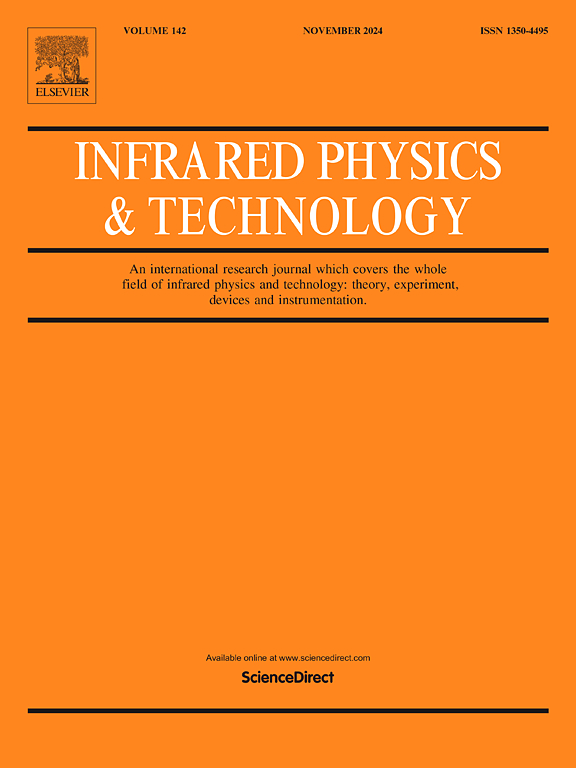Influence of GeO2/TeO2 ratio on thermal, structure and spectroscopic properties of Dy3+-doped tellurite-germanate glass
IF 3.4
3区 物理与天体物理
Q2 INSTRUMENTS & INSTRUMENTATION
引用次数: 0
Abstract
Dy2O3-doped tellurite-germanate glasses with an increase of GeO2/TeO2 ratio (TGZ) were synthesized and characterized through X-ray diffraction (XRD), differential scanning calorimetry (DSC), Raman, absorption, and emission spectra measurements. XRD spectra of Dy3+-doped TGZ glass confirmed the amorphous structure. The TGZ glass possess the higher anti-crystallization abilities than that of the pure tellurite glass. Raman spectroscopy showed that the amount of [TeO3] and [TeO3+1] units in the glass network were gradually decreased by increasing the ratio of GeO2 to TeO2. The result was further supported by the optical band gap energy of the TGZ glass. The luminescence intensity of the sample increased with an increase in GeO2 content and reached a maximum value at 10 mol%. The chromaticity coordinates of CIE 1931 were in the warm white light range, and the corresponding color temperature range was 3400 K–3600 K. The results showed that the addition of GeO2 to Dy3+-doped tellurite glass can improve the thermal stability and luminescence performance of the white light-emitting band.
GeO2/TeO2配比对掺Dy3+碲锗酸盐玻璃热、结构和光谱性能的影响
合成了一种提高了GeO2/TeO2比(TGZ)的dy2o3掺杂碲锗酸盐玻璃,并通过x射线衍射(XRD)、差示扫描量热法(DSC)、拉曼光谱、吸收光谱和发射光谱对其进行了表征。掺Dy3+的TGZ玻璃的XRD谱图证实了其非晶结构。TGZ玻璃具有比纯碲酸盐玻璃更高的抗结晶能力。拉曼光谱分析表明,随着GeO2与TeO2比例的增加,玻璃网络中[TeO3]和[TeO3+1]单元的数量逐渐减少。TGZ玻璃的光学带隙能进一步支持了这一结果。样品的发光强度随GeO2含量的增加而增加,在10 mol%时达到最大值。CIE 1931色度坐标在暖白光范围内,对应的色温范围为3400 K - 3600 K。结果表明,在Dy3+掺杂碲酸盐玻璃中加入GeO2可以改善其白光发光带的热稳定性和发光性能。
本文章由计算机程序翻译,如有差异,请以英文原文为准。
求助全文
约1分钟内获得全文
求助全文
来源期刊
CiteScore
5.70
自引率
12.10%
发文量
400
审稿时长
67 days
期刊介绍:
The Journal covers the entire field of infrared physics and technology: theory, experiment, application, devices and instrumentation. Infrared'' is defined as covering the near, mid and far infrared (terahertz) regions from 0.75um (750nm) to 1mm (300GHz.) Submissions in the 300GHz to 100GHz region may be accepted at the editors discretion if their content is relevant to shorter wavelengths. Submissions must be primarily concerned with and directly relevant to this spectral region.
Its core topics can be summarized as the generation, propagation and detection, of infrared radiation; the associated optics, materials and devices; and its use in all fields of science, industry, engineering and medicine.
Infrared techniques occur in many different fields, notably spectroscopy and interferometry; material characterization and processing; atmospheric physics, astronomy and space research. Scientific aspects include lasers, quantum optics, quantum electronics, image processing and semiconductor physics. Some important applications are medical diagnostics and treatment, industrial inspection and environmental monitoring.

 求助内容:
求助内容: 应助结果提醒方式:
应助结果提醒方式:


